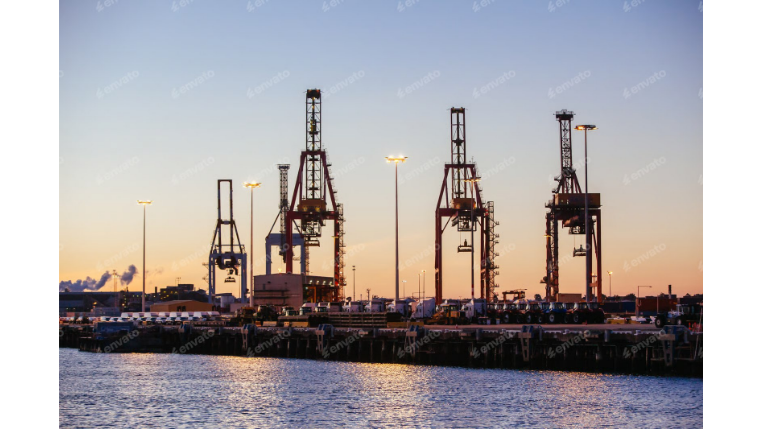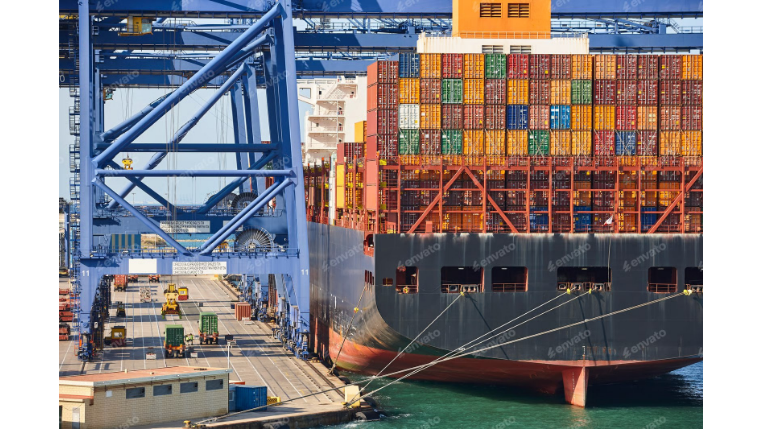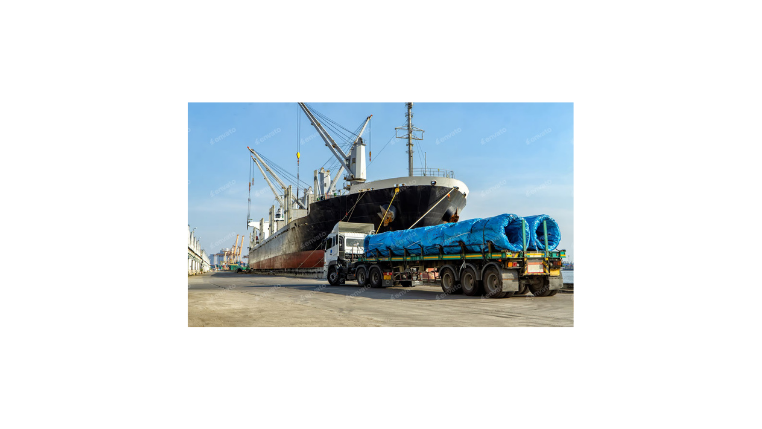In the intricate, fast-paced world of freight transportation, a standardized system of identification is essential for maintaining order and efficiency. One of the most fundamental components of this system is the Standard Carrier Alpha Code, universally known as the SCAC Code. This simple four-letter identifier is more than just a code; it is a critical tool that acts as the backbone of modern logistics, enabling seamless communication, enhanced security, and regulatory compliance.
This comprehensive guide will answer the key question, "What is an SCAC Code?" It will delve into its purpose, its function in today’s supply chain, and its importance for businesses in 2024.
What is an SCAC Code?
The SCAC Code is a unique, four-letter code used to identify a freight carrier. It was developed by the National Motor Freight Traffic Association (NMFTA) in the 1960s to streamline the process of identifying companies in the transportation industry. Each code is unique to a specific carrier and serves as a digital fingerprint, allowing all parties in the supply chain to instantly and accurately identify who is responsible for a shipment.
The code is managed by the NMFTA and is used across various modes of transport, including motor carriers, railroads, and ocean carriers. Its widespread adoption has created a universal language for carrier identification, which is indispensable for the highly interconnected nature of global trade.
Who Needs an SCAC Code?
The use of an SCAC Code is not limited to just freight carriers. Its application spans across a wide range of stakeholders in the supply chain, making it a non-negotiable tool for many businesses.
- Freight Carriers: All carriers, regardless of size, need an SCAC code to identify themselves in the logistics network.
- Shippers and Receivers: Companies that ship or receive large volumes of freight use SCAC codes to track and manage shipments.
- Customs Brokers and Freight Forwarders: These professionals use the codes for customs filings, electronic data interchange (EDI), and shipment documentation.
- Government Agencies: U.S. government agencies, including U.S. Customs and Border Protection (CBP), mandate the use of SCAC codes for various filings, such as the Importer Security Filing (ISF).
In essence, anyone involved in the movement of goods, from the moment a shipment leaves the warehouse until it arrives at its final destination, is likely to interact with an SCAC Code.
How Does an SCAC Code Work?
The practical application of an SCAC code is at the heart of its value. It works as a key to unlock a wide range of logistical processes.
- Freight Tracking: In the same way that a tracking number identifies a specific package, an SCAC code identifies the carrier responsible for that package. This allows shippers and logistics providers to accurately track freight as it moves between different transportation nodes.
- EDI and Documentation: The code is used in Electronic Data Interchange (EDI) messages, which are the digital documents used to share information between businesses. This includes bills of lading, freight invoices, and customs documents, all of which rely on the SCAC code for accurate carrier identification.
- Customs Compliance: For goods entering the U.S. by ocean, the SCAC code is a mandatory field in the Importer Security Filing (ISF). This simple four-letter code is a vital component of the government’s efforts to enhance supply chain security and ensure compliance.
- Intermodal Operations: The SCAC code is also used in the Uniform Intermodal Interchange and Facilities Access Agreement, which is a contract that governs the use of intermodal equipment. The code ensures that all parties in the intermodal chain can identify and communicate with the correct carrier.
The Importance of SCAC Codes in 2024
In 2024, the importance of SCAC codes has only grown. With the increasing demand for supply chain visibility, security, and efficiency, SCAC codes are more critical than ever.
- Supply Chain Visibility: As businesses demand greater real-time visibility into their shipments, SCAC codes are a foundational element for connecting a carrier's data to a shipper's or a logistics provider's tracking system.
- Regulatory Demands: Government regulations and mandates, particularly those related to international trade and border security, continue to evolve. SCAC codes remain a non-negotiable requirement for many of these filings, making compliance impossible without one.
- Industry Standardization: The code’s universal adoption across the North American freight industry ensures that all parties are operating from the same playbook, which minimizes confusion and streamlines communication.
SCAC Code List: Carrier Identification
- ACBL: Atlantic Caribbean Line
- ACLU: Atlantic Container Line
- ACSU: Grieg Star Shipping
- ADMU: Admiral Container Lines
- AIDA: Asiatic Shipping Services
- AKMR: Alaska Marine Lines
- AMLU: Antillean Marine Shipping Corporation
- ANNU: Australia National Line
- ANLU: American President Lines (APL)
- ANRM: Alianca Navegacao e Logistica
- APLU: American President Lines (APL)
- ARKU: Arkas Container Transport S.A.
- AROF: Atlantic Ro-Ro Carriers Inc
- BANQ: Blue Anchor America Line
- BAXU: Sunmarine Shipping Services
- BCHU: Bermuda Container Line
- BIEN: Bien Dong Shipping Company
- BISU: Bermuda International Shipping Ltd
- BLJU: Avana Global FZCO
- BLZU: BLPL Singapore
- BMSU: BMC Line Shipping LLC
- BNAO: Brointermed Lines Limited
- BTBO: Borchard Lines Ltd
- BTBI: Bengal Tiger Line
- BWLE: Blue World Line
- BWLU: Blue Water Lines
- CCLN: COSCO Container Lines Co (Americas)
- CEGL: Central Gulf Lines, Inc
- CEYP: Ceylon Shipping Corporation Limited
- CFLD: CSAL Canada States Africa Line
- CHIW: Compania Sud Americana de Vapores (CSAV)
- CHNJ: China Shipping Container Lines Co (CSCL)
- CHVW: Swire Shipping
- CKLU: K Line
- CLIB: Companhia Libra de Navegacao
- CMCU: Crowley Maritime
- CMDU: Compagnie Maritime d'Affretement Compagnie Generale Maritime (CMA CGM)
- CNIU: Compagnia Chilena de Navigacion Interoceanica SAC (CNI)
- COSU: COSCO Container Lines
- CPJQ: Chinese-Polish Joint Stock Shipping Company (CHIPOLBROK)
- CSFU: Containerships
- CULU: China United Lines (CU Lines)
- DAAE: Delmas
- DAYU: Deutsche Afrika-Linien (DAL)
- DJLU: Dongjin Shipping
- DOLQ: Dole Ocean Cargo Express
- DPHS: Delphis
- DSLU: Delta Shipping Lines
- DVRU: Delmas
- DYLT: Daylight Transport LLC
- ECNU: Econ Shipping
- ECUI: ECU Worldwide
- EGLV: Evergreen Line
- EIMU: Eimskip
- ELOU: Maritime Carrier Shipping Center GmbH & Co. (MACSEM)
- EMKU: Emkay Line
- EQLI: Ecuadorian Line
- ESPU: Emirates Shipping Line
- EUKO: Eukor
- EULU: EuroAfrica Shipping Lines Co. Ltd. (ESL)
- FBIU: Florens Container Services
- FCOM: Fednav
- FCSK: Focus Trucking
- FESO: Far Eastern Shipping Company
- FLFU: Finnlines
- FLGZ: Flexi-Van Leasing
- FLNV: Frontier Liner Services
- GCIU: Global Container International
- GESC: Great Eastern Shipping Inc.
- GETU: Tarros S.p.a.
- GFAL: Galborg
- GILU: Geest Line
- GMGO: Grimaldi Lines
- GRIU: Grimaldi Deep Sea S.P.A.
- GSLU: Gold Star Line Ltd.
- HALP: Hartmann Project Lines
- HDMU: Hyundai Merchant Marine Co., Ltd. (HMM)
- HJSC: Hanjin Shipping Co. Ltd.
- HLCU: Hapag Lloyd Container Line
- HRZU: Horizon Lines
- HUAU: Hoegh Autoliners
- HYDU: Hyde Shipping
- IAAU: Interasia Lines
- IDMC: Industrial Maritime Carriers (Intermarine)
- IILU: Independent Container Line (ICL)
- INOC: Interocean Lines
- IRSU: Hafez Darya Arya Shipping Company (HDSCO)
How to Look Up an SCAC Code in 2024
Finding a carrier's SCAC code is a straightforward process, but it requires access to the official database. The NMFTA maintains and updates the official list of all active SCAC codes. While a full list is not publicly available for free, a carrier's code can often be found on their website, bill of lading, or other shipping documents. For a definitive lookup, however, an official subscription to the NMFTA's database is required.









